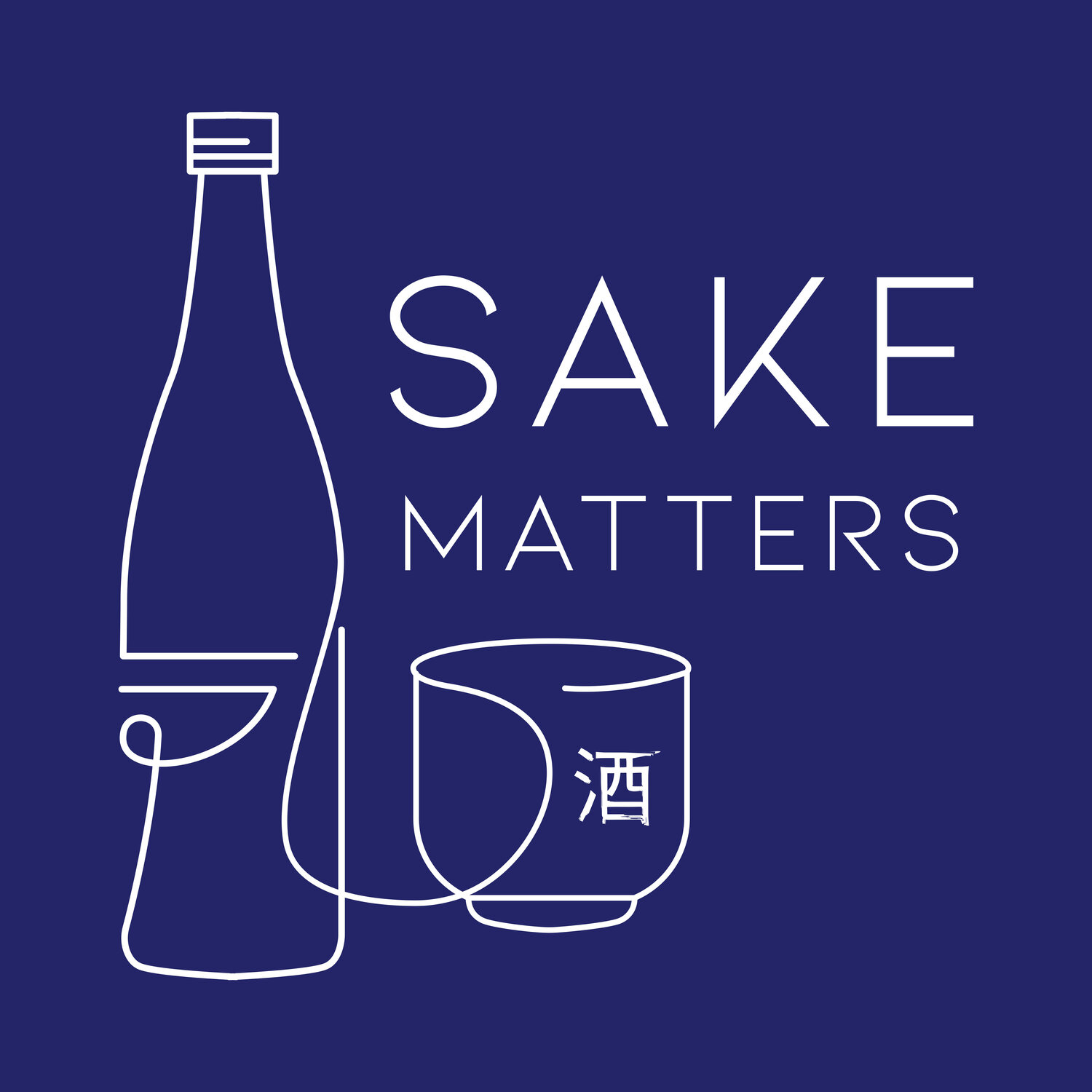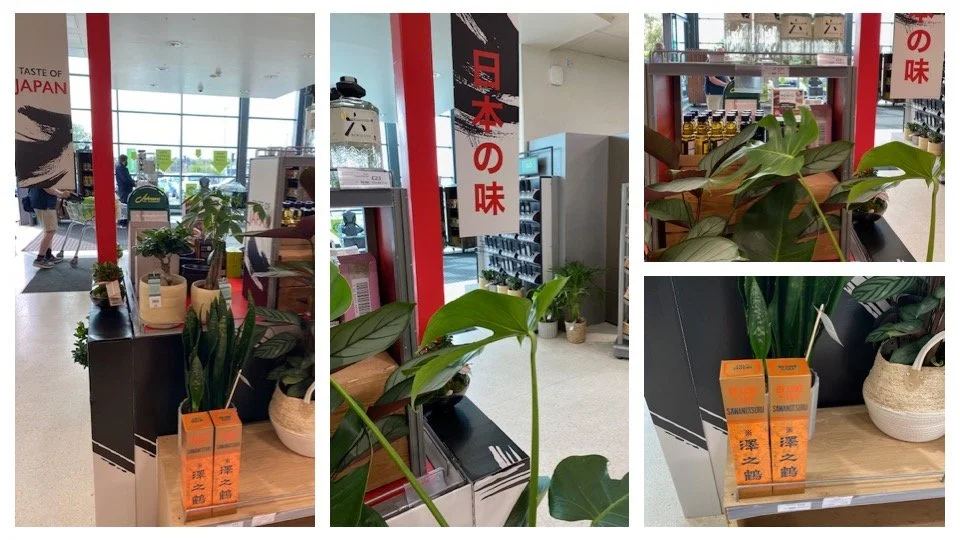GOBBLEDYGOOK
Nearly thirty five years ago, with just a handful of TV stations to choose from, we Brits were treated to the final series of what I think is one of our finest comedies: Blackadder Goes Forth.
In one episode entitled “Corporal Punishment”, General Melchett (General Sir Anthony Cecil Hogmanay Melchett, no less) turns to his lackey, Captain Darling, asking him to “Make a note of the word gobbledygook. I like it. I want to use it more often in conversation.”
In somewhat similar fashion, a few weeks back I made a mental note that I wanted to use the word “acrimonious” more often. So I will.
What follows here is indeed acrimonious, it’s an acrimonious plea to the hospitality industry’s Sake non-believers to get onboard and start to show some respect for something they clearly know nothing about, even though in some cases they might think they do.
I say that because outside of this small but influential group of naysayers, consumer knowledge, interest and the general appeal of Sake has come a long way this last decade, particularly in my view in the past few years, and in that case we don’t need any setbacks to mess with the momentum.
In fact, ironically, the pandemic’s lockdowns might even have helped Sake’s global reach somewhat. A small community of Sake-curious folks that might not have shelled out for an in-person course, did stump up the dough for an online course, for example. Fermentation fans had more home time to geek out and attempt to brew Sake rather than the simpler beer option.
Restaurants too had to up their game to fight for every dollar amidst declining customer numbers. Case in point is CHAAT here in Hong Kong which has won itself a Michelin star for its reimagined authentic Indian flavours. Its sommelier team curated a short selection of boutique Sakes based on their textures, levels of umami and intensity to be served with three selected dishes. So it’s no longer a pint of Kingfisher you need to order, and doesn’t Nihonshu Oendan ‘TIGER’ Junmai Daiginjo Muroka Nama Genshu sound so much more exciting with CHAAT’s Tandoori Octopus anyway?
Ry Beville in the latest issue of the excellent Sake Today magazine reports growing subscription numbers and a Japanese restaurant sprinkled in some of the more unexpected parts of the globe. He’s right, a Uni mate of mine deep in America’s Midwest suburbia frequents a local eaterie doing Japanese and Korean dishes, with some legit offerings too, a place which truly stands out amidst the mundane stacks of pancakes, chopped salad and prime rib purveyors all around it.
But it’s not enough. Things are getting better but it’s all from a very low base and for every couple of steps forward, there’s often a step back; there’s near misses; close but no cigar scenarios. You get the picture.
A big part of it comes down to availability and accessibility. In Japan, and Hong Kong too actually, you’re tripping over Sake as you pop into unassuming shops and convenience stores, able to pick up a bottle of Ginjo with your loaf of bread of carton of milk. But it’s very different in most other countries.
Waitrose is a well-established (nearing its 125th birthday) upmarket chain of supermarkets in the UK, attracting middle class families with their wide aisles, free coffee and excellent range of groceries. Booze is well represented too with almost thirty English wines (bravo by the way) and top draw line ups from the Continent weighing in at north of two hundred pounds. Even with the UK’s crippling import tariffs, affluent Brits have the wherewithal to spend on their favourite tipple.
So how does Sake fare?
Two dozen options for canned wine are available from Waitrose, but not one 180ml cup Sake. Wouldn’t they be perfect for picnics in Summer? What a great way to cope with all the customary train delays commuting home from the City too.
To add insult to injury, when you put Sake into their online search facility, you get a very promising:
However what you find is a mix of Japanese gin, whisky and beer, and just the one lonely bottle of Sawanotsuru Deluxe Sake, accurately described by one consumer as:
A little harsh and none of that umami deliciousness that good quality Sake can offer. Please Waitrose source some higher level Sakes for customers to try too - say a Tokubetsu Junmai, a Junmai Ginjo and a Daiginjo.
That plea was five years ago. The reviewer was ahead of their time with that suggestion to source better products but to date, there’s been no action.
Another suggested that it was “Great for cocktails.” I rest my case.
I wrote an email to them suggesting that Waitrose could be a trailblazer for Sake if they got on board and improved the range, with significant financial gains, citing what had happened in the past decade with the craft gin movement.
Your comments have been shared with the buyer for there* review and they will contact you if they feel there is a need to do so.
*their spelling, not mine I should add!
They never did.
They have however removed the two products that previously popped up in the “Sake” search which I would like to think is down to me. I thought I should point out to them that Cooks’ Ingredients Mirin Rice Wine and Cooks’ Ingredients Shaoxing Rice Wine are not Sake. At least they got that bit sorted.
Not really much of a TASTE OF JAPAN (unless you’re into eating house plants)
Check out the recent TASTE OF JAPAN display in my parents’ local Waitrose - miserable isn’t it? Oh look, there’s a couple of bottles of “Deluxe” Sake and, wow, a slab of Asahi beer. Close your eyes and you could almost be in Takashimaya department store in Shinjuku, Tokyo, right? Not exactly.
You may have seen my recent (acrimonious) Instagram post shaming Marcus and Gregg, as well as the BBC, historically the UK’s go to source of reliable information and all round righteousness, yet they bumble their way incorrectly classifying Sake (or Sar-kee as they would have us say it). The show is ironically called Masterchef - The Professionals.
Such miscommunications are fuelling the stigma that Sake is just too complicated to understand and a high octane beverage. The comments just aren’t helpful. “You know what, let’s not order Sar-kee after all, it sounds a bit like a hangover in the making,” Britain declared.
Sorry if this all sounds rather sad and dismal, but it’s the reality I fear. You could say it’s all rather lugubrious. Make a note of the word lugubrious, I fear we’ll need to use it more often in our Sake conversations.
QUICK GLOSSARY:
Junmai 純米: Sake made using only rice, water, yeast and koji – no added alcohol (純: pure; 米: rice)
Daiginjo大吟醸: Sake made from rice at a polishing ratio below 50%
Muroka: Sake that has not been fine filtered using charcoal
Nama/Namazake: 生酒 (生:raw, fresh, or living; 酒:sake) – in short, unpasteurized Sake
Genshu: Sake that hasn’t been diluted with water meaning it can be a little stronger than the standard 15-16% alcohol
Tokubetsu 特別: Simply means “special” and identifies that a special production process was applied to a Junmai or Honjozo category Sake. More often than not it designates that a lower rice polishing rate than required took place
Ginjo 吟醸: Sake made from rice at a polishing ratio below 60%








